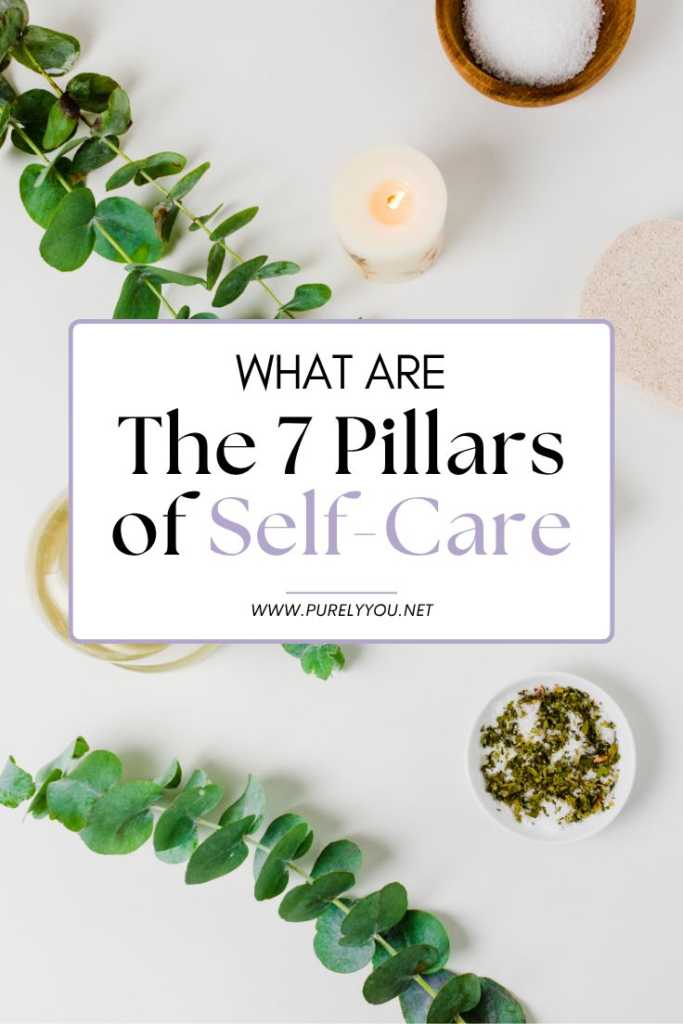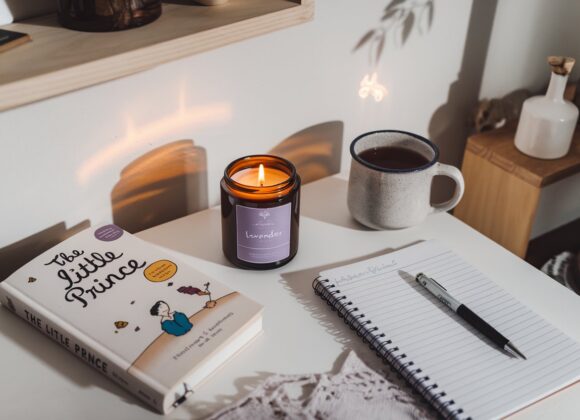You know that feeling when your phone hits 3% battery? That low-power panic mode? Truth is, a lot of us run our own lives that way. We sprint on fumes, grabbing at quick fixes—a fancy coffee, a frantic scroll, a bubble bath we don’t actually have time for—praying it’s enough to get us to the next charger.
We’ve all been there. Maybe it wasn’t a shattered jar of marinara sauce in a grocery store, but we’ve all had that one small, silly thing break the camel’s back. (RIP, whatever that thing was for you.)
It’s never really about the sauce. It’s about running on absolute, bone-dry empty.
That moment proves that real self-care isn’t a single bubble bath or a scented candle. It’s architecture. It’s about building a sturdy, reliable structure for your well-being that can weather life’s little storms (and the occasional totally-relatable meltdown).
We can call these the 7 Pillars of Self-Care. Think of them as the load-bearing walls for a life that feels good, not just one that looks productive. Ready to build?
Pillar 1: Physical Health

This isn’t about getting ripped for summer. This is about the basic, no-frills maintenance of the magnificent meat-sack you live in. If this pillar is wobbly, everything else feels ten times harder.
So, what does a solid physical foundation look like?
- Movement That Feels Good: I’m not telling you to grind it out at the gym if you hate it. Did you dance in your kitchen for 10 minutes? Did you take a walk while listening to your favorite podcast? Fantastic. You moved. The goal is to shake off the stagnant energy, not punish yourself.
- Sleep is a Superpower: Stop glorifying “I’ll sleep when I’m dead.” Poor sleep makes you less intelligent, more irritable, and hungrier. Prioritize it like your sanity depends on it—because it does.
- Eat to Fuel, Not Just to Feel: Look, I love pizza. But I know that if I eat it for every meal, I’ll feel like a bloated slug. It’s about balance. Nourishing your body with good food is a direct message to your brain that you matter.
Ever notice how every problem seems bigger when you’re tired and hungry? It’s because you’ve neglected your physical foundation. It’s the first place to look when everything feels off.
Pillar 2: Mental Space
Your brain is not a browser with 100 tabs open. It needs clearing out, or it will crash. This pillar is all about managing the chaos between your ears.
How to start cleaning up your mental desktop:
- Challenge Your Inner Critic: That voice that says “you’re messing this up” or “everyone is doing better than you”? Yeah, it’s kind of a jerk. Talk back to it. Ask, “Would I say this to my best friend?” Usually, the answer is a hard no.
- Consume Consciously: The news, social media, that negative coworker—it all adds up. You have a limited amount of mental energy. Who and what deserves a piece of it? Curate your information diet like your mood depends on it.
- Learn for Fun: Remember learning things that weren’t for a performance review? Watch a documentary about octopuses. Listen to a history podcast. It shifts your brain out of stress mode and into wonder mode.
Pillar 3: Emotional Balance
Feelings are not facts, but they are important data. This pillar is about acknowledging that data without letting it hijack the whole system.
Let’s get comfortable with being uncomfortable:
- Name the Feeling: Instead of just feeling “bad,” get specific. Are you anxious? Disappointed? Overwhelmed? Naming it robs it of some of its power and helps you figure out what you actually need.
- Find Your Release Valve: Emotions need to move through you. For some, that’s crying. For others, it’s venting in a journal, talking to a friend, or even screaming into a pillow (it works, I promise). Find your outlet.
- Practice Self-Compassion: You’re allowed to have a bad day. You’re allowed to make a mistake. Treat yourself with the same kindness you’d offer a struggling friend. It’s a game-changer.
Pillar 4: Social Connections

Humans are wired for connection. But not all connection is created equal. This pillar is about building a network that holds you up, not one that drains you dry.
Time for a social audit:
- Identify Your Energy Types:
- Radiators: People who make you feel warm, seen, and energized.
- Drains: People who leave you feeling depleted, criticized, or anxious.
- Invest in the Radiators: Schedule that phone call. Plan that coffee date. Be proactive about filling your connection cup.
- Set Boundaries with the Drains: You don’t have to cut people out (unless you need to), but you can limit your exposure. A simple “I can’t talk right now” is a complete sentence. You don’t owe anyone your energy.
Pillar 5: Practical Life

Listen, a cluttered space, a mountain of unpaid bills, and an empty fridge will spike your anxiety faster than anything. This pillar is the unsexy, but utterly essential, art of adulting.
Get your life admin in order:
- The 5-Minute Rule: If a task will take less than five minutes, do it immediately. Hang up your coat. Put the dish in the dishwasher. Send that quick email. It prevents the mental load of a million tiny tasks.
- Tame Your Environment: You don’t need a minimalist mansion. Just make your bed. Clear off one countertop. A little bit of external order creates a surprising amount of internal calm.
- Automate What You Can: Set up auto-pay for bills. Schedule your grocery delivery. Your future, less-stressed self will thank you.
Pillar 6: Inner Purpose
Before you scroll past, this isn’t necessarily about religion. It’s about connecting to something bigger than your to-do list. It’s about meaning.
How to tap into your spiritual core:
- Awe is a Antidote: When was the last time you felt genuine awe? Watch a sunset. Look at the stars. Stand under a massive tree. It instantly shrinks your worries down to size.
- Practice Gratitude: I know, it sounds cheesy. But taking 60 seconds before bed to mentally list three things you’re grateful for is like a reset button for your brain. It forces a perspective shift.
- Find Your “Why”: Why are you doing any of this? What matters to you? Connecting to your values—whether it’s kindness, creativity, or justice—gives your daily grind a sense of purpose.
Pillar 7: Real Rest

purely and simply fill your tank. No productivity allowed.
This is deeply personal. What recharges me might drain you.
- The Key Question: Does this activity leave me feeling more energized, or more drained?
- For an introvert, recharging might mean an hour alone with a book.
- For an extrovert, it might mean a loud dinner with friends.
- Schedule Your Joy: We schedule everything else, so why not schedule fun? Block out time for your hobby. Put “do nothing” on your calendar. Protect it like a crucial business meeting.
- Embrace Boredom: IMO, constant stimulation is the enemy of recharging. Let yourself be bored. Stare out the window. It’s in these quiet moments that our brains often have their best ideas and find real rest.
RELATED BLOG POST: 12 Steps to Self-Care for When You’re Running on Empty
Your Self-Care Starting Point
So, there you have them. The 7 Pillars. But here’s the secret: you don’t need to perfect all seven at once.
In fact, that’s a surefire way to feel overwhelmed and give up.
Right now, just glance over the list. Which pillar feels the shakiest? Which one, if you gave it a little attention, would make the biggest difference in your life?
Start there. Maybe this week, you focus on drinking more water (Physical) and saying “no” to one thing (Social). Next week, you add in a 5-minute tidy-up (Practical).
This is your structure. You’re the architect. Build it strong, build it kind, and remember—it’s okay if you sometimes have to prop up a wall that’s looking a little wobbly. We all do. Now, go build a foundation that’s worthy of you.
Enjoyed this blog post? Don’t forget to pin it!






